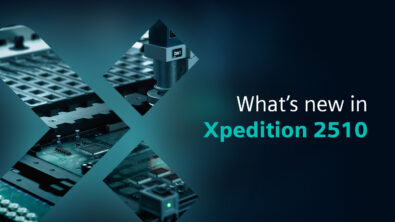Ultra high-density interconnect: a game changer in electronics

As electronic devices become smaller and more powerful, the need for advanced interconnect technology grows. Ultra high-density interconnect (UHDI) is a key innovation that has changed the design and production of PCBs, enabling the creation of more compact, efficient, and high-performing electronics.
What is ultra high-density interconnect?
UHDI refers to a PCB manufacturing technology that involves the use of extremely fine traces, spaces, and microvias to allow for more components and connections within a smaller area and potentially reduce the PCB stackup layer count. This results in high-density circuitry that can fit into compact devices without compromising performance or functionality.
The rising use of UHDI technology is largely driven by the increasing demands of industries like consumer electronics, telecommunications, automotive, aerospace, and medical, where miniaturization and functionality are key.
Key features of UHDI
- Higher component density – UHDI enables manufacturers to place more components on a PCB without increasing its size. This is crucial for devices like smartphones, wearables, and IoT devices, where space is limited.
- Microvias – Tiny holes drilled and plated into a PCB to connect different layers, allowing for better signal integrity and reduced electrical resistance. Microvias help make UHDI more efficient and reliable, supporting high-frequency applications.
- Thinner traces – UHDI uses thinner traces and spaces compared to traditional PCBs, allowing for higher signal routing density. This is essential for faster data transmission in advanced electronic devices.
- Improved performance – With more efficient routing and higher connectivity, UHDI improves overall device performance, supporting the development of faster, more powerful electronics.
Benefits of UHDI technology
- Miniaturization – UHDI technology allows manufacturers to create smaller devices without sacrificing functionality. This is a key factor in the development of ultra-slim smartphones, wearable tech, and advanced medical devices.
- Increased functionality – By packing more circuits and components into a smaller space, UHDI enables devices to have more features and capabilities. This is critical for the growing demands of consumer electronics and smart devices.
- Better signal integrity – UHDI’s use of microvias and optimized trace routing helps reduce electrical interference, improving signal integrity and device performance.
- Cost-efficiency – As UHDI technology becomes more widespread, it has the potential to reduce production costs. More efficient use of space on PCBs allows manufacturers to use fewer materials and streamline production processes.
- Supports high-speed applications – With the growing need for faster data transmission and processing, UHDI is vital for supporting high-speed applications like 5G networking, cloud computing, and autonomous vehicles.
UHDI in various industries
- Consumer electronics – In the realm of smartphones, tablets, and wearables, UHDI plays a crucial role in miniaturizing components while enhancing device performance. As the demand for sleek, multifunctional gadgets continues to rise, UHDI will be a critical factor in delivering faster processors, better battery life, and more powerful features within smaller form factors.
- Automotive – UHDI is important for advanced driver-assistance systems (ADAS), autonomous vehicles, and in-car infotainment systems. As vehicles become more reliant on digital components, UHDI helps meet the stringent size, weight, power, and performance demands of modern automotive electronics.
- Medical devices – In the medical field, where precision and reliability are paramount, UHDI is helping to develop smaller, more sophisticated diagnostic and monitoring devices. From portable ultrasound machines to wearable health trackers, UHDI enables better performance and longer battery life in critical healthcare technologies.
- Aerospace and defense – UHDI is used in aerospace and defense applications where high reliability and performance are crucial. Its ability to support high-frequency signals, along with its compact form factor, makes it ideal for avionics, communications, and radar systems.
The future of UHDI
As electronic devices continue to shrink in size while growing in complexity, UHDI technology will play an increasingly important role. The continued development of 5G, AI, IoT, and other modern technologies will motivate PCB designers to push the boundaries of what UHDI can achieve.
Additionally, with ongoing research into advanced materials and manufacturing techniques, we can expect UHDI to become even more efficient, cost-effective, and widely adopted across many industries.
UHDI is a transformative technology that is enabling the future of electronics. It is industry best practice for designers to collaborate with their PCB supplier from the start; this is even more so when implementing UHDI technologies.
By allowing more components to be packed into smaller spaces, UHDI is driving innovation across a variety of industries and as the demand for smaller, more powerful, and efficient devices grows, UHDI will continue to be a cornerstone in the development of next-generation technology.


